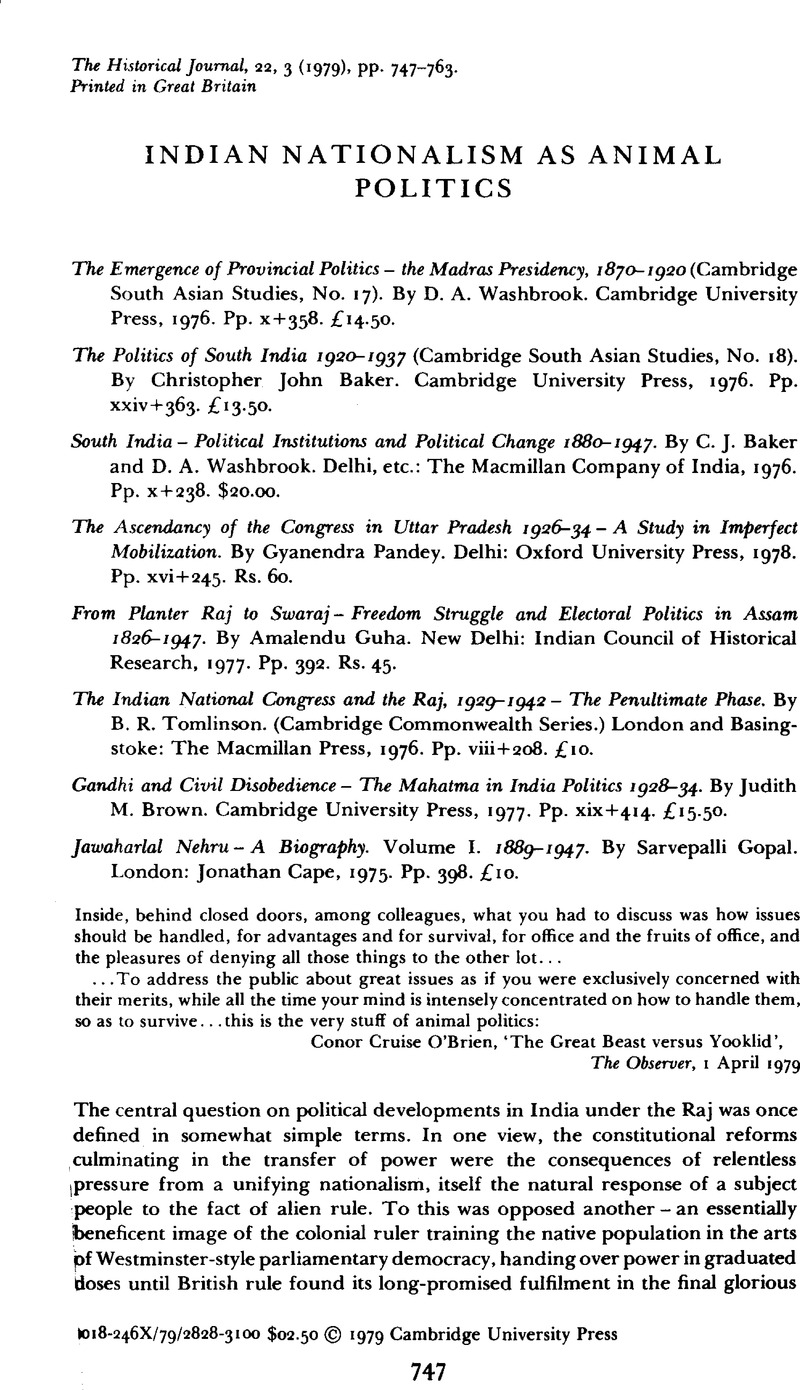Published online by Cambridge University Press: 11 February 2009

1 This description is not accepted by the historians in question, who rightly emphasize the individuality and distinctiveness of their several approaches to the subject. Yet in their analysis and substantive conclusions probably they have enough in common to justify their being treated as a ‘school’. However, the term is used in this article more as a convenient shorthand than as a tightly defined academic category.
2 Gopal, S. in The Indian Economic and Social History Review (07–09 1977), p.405Google Scholar.
3 Note by H. C. Haig, 13 June 1930. Quoted in Sarkar, S., ‘The logic of Gandhian nationalism: civil disobedience and the Gandhi-Irwin pact (1930–1931)’, The Indian Historical Review (07 1976), pp. 114–46Google Scholar.
4 Gopal's, S. review, The Indian Economic and Social History Review (07–09 1977), pp. 405 ffGoogle Scholar.
5 See, for instance, R. Ahmed, ‘The Bengal Muslims, 1876–1905: the quest for identity’ (Oxford D.Phil, thesis); also Brass, Paul R., Language, religion and politics in North India (Cambridge, 1974)Google Scholar.
6 Dr Brown's first book on Gandhi, except for its lack of emphasis on local interests, shared many of the assumptions of the Cambridge School. Her recent work is more pluralistic in approach and shows a greater awareness of the complexities of political dynamics.
7 See S. Sarkar's article cited above.